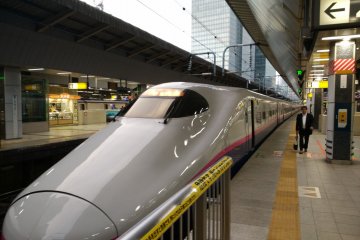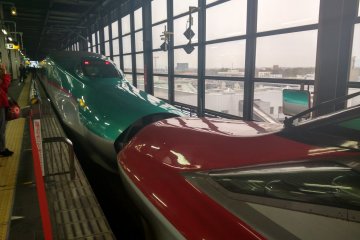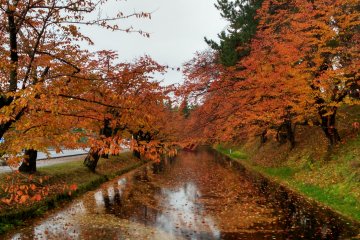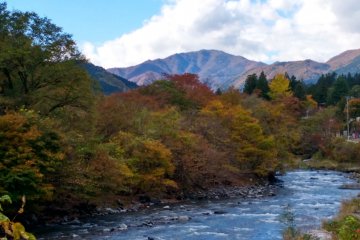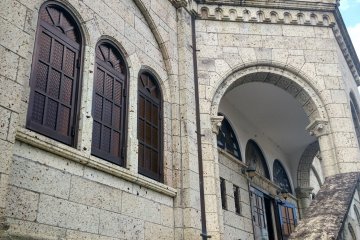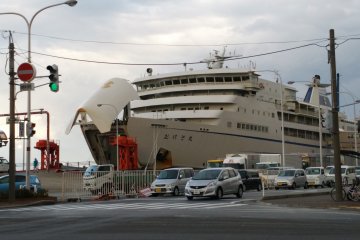The JR East Pass covers the whole of eastern Honshu from Nagano prefecture to the northwest of Tokyo all the way up to Aomori prefecture in the Tohoku region. This rail pass allows holders to use all JR lines including express lines and shinkansen bullet trains for any five days within a two week period. This gives a lot of flexibility to travellers and with the very high speed and frequency of Shinkansen more places could be reached within one day.
There are too many places to be visited in east Japan. 5 weeks would not be enough to do all of them. I am going to suggest two journeys that cover the most important and renowned sites in east Japan, making the most out of the tickets.
Table of contents
Tour 1: via Nagano
- Day 1: Tokyo > Matsumoto (Duration: 3 hours) Matsumoto has a lot to offer, including the well preserved castle and Nakamachi street.
- Day 2: Matsumoto > Nagano (Duration: 1 hour) Nagano’s Zenkoji temple is the highlight of the city. Other than this, it's enjoyable to simply stroll the streets and taste the region's famed apple products and fresh-made soba.
- Day 3: Nagano > Nagaoka (Duration: 2 hours 30 mintues) > Sanjo (Duration: 0.5 hours) > Niigata (Duration: 1 hour) Nagaoka and Sanjo are small relaxing villages. Traditional crafts such as knife making from Sanjo or wine brewing in Nagaoka let you understand in depth local village lives.
- Day 4: Niigata > Sado Island Sado Island is 1 hour by jetfoil or 2.5 hours by ferry from Niigata. It has very beautiful landscape, perfect for hiking and cycling. The gold mine next to Aikawa is a cultural monument of Japanese mining history. On the east in Ogiminato and Shukunegi small traditional village is very relaxing. (To thoroughly visit Sado Island, two days is the minimum; but if time is not enough, a day from Niigata is also possible)
- Day 5: Niigata > Takasaki (Duration: 1 hours) > Utsunomiya (Duration: 1 hour) Tagasaki is a small city; yet there are nice shrines and Buddhist temple on its outskirt. Buses reach Shorinzan temple from the train station in 1 hour; another highlight, the Haruna Schrine and the nearby waterfall, takes around 1.5 hours to reach by bus. It offers very beautiful natural scenes.
- Day 6: Utsunomiya > Nikko (3/4 hours) > Tokyo (Duration: 2 hours) Enjoy Utsunomiya with its shrines, castle ruins and old church, then move on to Nikko, whose Buddhist temple are recognized as world heritage sites. Experience Kengo waterfall if time allows, before returning to Tokyo.
Tour 2: via Tohoku

- Day 1: Tokyo > Shin-Aomori (Duration: 3.5 hours) > Hirosaki (Duration: 30 minutes) Travel on the first day all the way north and moving downwards in the next days. Near Shin-Aomori station there is a very modern art gallery.
- Day 2: Hirosaki > Morioka (Duration: 2 hours) > Ichinoseki (Duration: 0.75 hours ) > Sendai (Duration: 30 minutes) There is a very nice castle in Morioka. Another famous point of interest in is the old headquarter of Iwate bank. In Ichinoseke you can trace the footsteps of Japanese great poet and writer Miyasawa Kenji. The city museum is fun to spend some time in. Travel to Sendai to spend the night there.
- Day 3: Sendai > Matsushima (Duration: 0.5 hours) / Sendai > Yamagata (Duration: 1.5 hours) Matsushima is one of the three most beautiful natural scenes in Japan. You can take a boat to see the eccentrically formed island. Or you can spend the day in Yamagata, another small town. The famous Risshaku-ji temple is just a few train stops away from Yamagata city. Go back in the evening to Sendai to spend the night.
- Day 4: Sendai > Utsunomiya (Duration: 1.5 hours) > Nikko (Duration: 1 hour) Utsunomiya in Gunma prefecture has number of attractions to offer. The remains of the ancient castle and an old Christian church are interesting to look at. Nikko could be done in the afternoon, the many majestic temples and the lake area on the west takes a least a few hours to visit
- Day 5: Nikko > Narita (Duration: 2.5 hous) > Sakura (Duration: 15 minutes) > Chiba (Duration: 20 minutes) > Tokyo / Narita airport The old Edo-style old towns of Narita and Sakura and various Buddhist temples in Narita are often missed out by those who only head to or come from the airport. In Chiba boats trips allow you to enjoy great views of the port.
Tips on riding JR trains
With the JR East Pass you don’t need to go through the gate; just show your pass to the conductor to get into and out of the stations.
Do plan ahead. Sometimes you won’t realize how fast or slow it would be to travel to the next destination, especially when Shinkansen is not used.
It makes sense to reserve a seat when riding a long journey. Just show your pass at the ticket offices and ask for a reserved seat.
Electric plugs are often available beneath windows on shinkansen, it is therefore better to reserve window seats if you need to charge any devices.
On the train, ask out of politeness the passenger behind you before you lower your seats.
Refreshments are served on trains, in case you are hungry or thirsty.







